Credit: NDD Corporation
NDD’s IT specialists have devised sophisticated algorithms that process the vast amounts of data collected by drones during various operations. These data-driven insights empower businesses to make informed decisions, optimize workflows, and gain a competitive edge in their respective industries.
Here are some examples of systems NDD developed:
Embedded System
A microprocessor-based computer hardware and software system known as an embedded system is created to carry out a specific task, either independently or as a component of a larger system.
Cloud Computing
Customers can access infrastructure and apps through the internet using cloud computing, rather than installing and maintaining them locally.
Communication Control
A communication controller is a tiny computer that controls how input/output (I/O) data is transmitted through a network, host computer, or computer. All data is stored on a mainframe computer and may be tracked by users across all network activities thanks to a communication controller.
Machine Learning
The practise of educating a computer system to generate precise predictions from input data is known as machine learning.
These predictions might include determining whether a piece of fruit in a picture is an apple or a banana, identifying pedestrians crossing the street in front of a self-driving car, determining whether the word “book” refers to a paperback or a hotel reservation, determining whether an email is spam, or accurately recognising speech to create captions for a YouTube video.
Physics Simulation
A mathematical model whose variables specify the state of the system at a certain time is the foundation of a physics simulation.
New business solutions that NDD propose:
Real-time/offline image processing of drone camera images
In many real-world drone applications, a combination of both real-time and offline processing may be used. For example, the drone might perform real-time image processing to detect and respond to immediate hazards while simultaneously capturing data for further detailed analysis offline.
Making a flight plan, recording flight, registration and storage of photos, orthoimage generation, etc. using cloud services
Cloud-based image processing platforms can perform advanced photogrammetry techniques to generate orthoimages and 3D models from the drone’s captured images. These platforms leverage the cloud’s computing power to process large datasets efficiently and produce high-quality results.
Automatic drone control based on user-defined flight plans
Users may provide waypoints, which are certain GPS coordinates or sites that the drone should visit throughout the operation, to create their flight plans. Additionally, users may customise each waypoint’s flying characteristics, including altitude, speed, and camera settings.
Maneuver training and test flights using drone simulators
Maneuver Training:
1. Flight Controls Familiarization: Beginners can use drone simulators to get acquainted with the flight controls, understanding how different inputs affect the drone’s movement in a risk-free setting.
2. Basic Flight Maneuvers: Pilots can practice essential maneuvers like takeoff, landing, hovering, ascending, descending, and turning. Repeatedly performing these maneuvers in the simulator builds muscle memory and enhances proficiency.
Test Flights:
1. Mission Planning: Before conducting a real flight mission, pilots can use simulators to plan and visualize their routes, waypoints, and actions, ensuring a well-prepared flight plan.
2. Scenario Rehearsal: For critical missions or complex flight scenarios, pilots can rehearse the entire flight in the simulator, identifying potential issues and optimizing the mission’s success.
Visualization of flyable airspace by fluid simulation.
Visualization of flyable airspace using fluid simulation is an innovative concept that combines computational fluid dynamics (CFD) and virtual reality (VR) to provide drone pilots and operators with a more intuitive and immersive understanding of the airspace they can navigate. This approach allows users to visualize the flow of air and potential air hazards in real-time, creating a dynamic representation of the airspace that is easy to interpret.
Technologies behind the scenes
Cloud Services :AWS, GCP etc.
Machine Learning :PyTorch, TensorFlow, etc.
Simulator :Unreal Engine, AirSim, Ardupilot, etc.
Devices :Drones(Parrot, DJI, etc.) , Smartphones(Android, iPhone/iPad),
Smart Glasses, etc.
Examples of developed systems
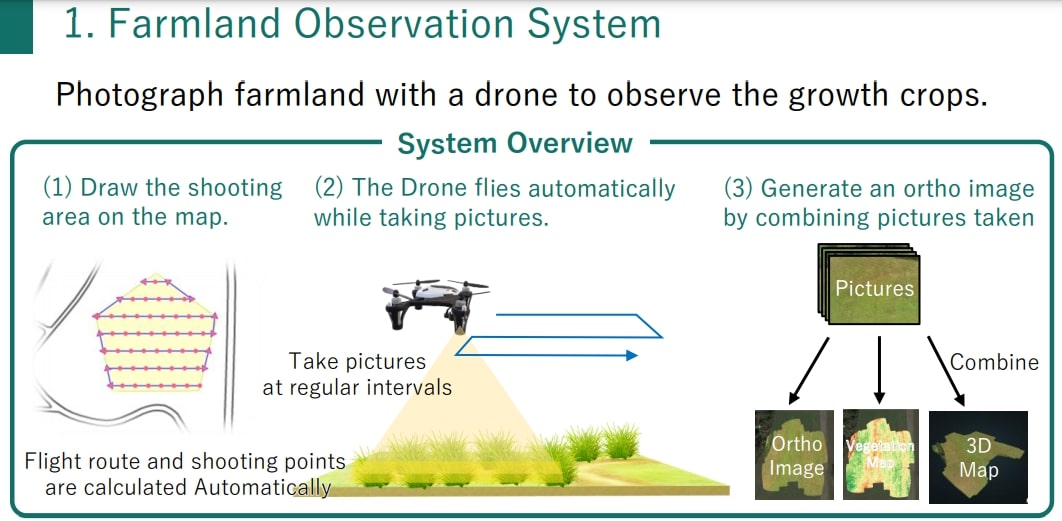
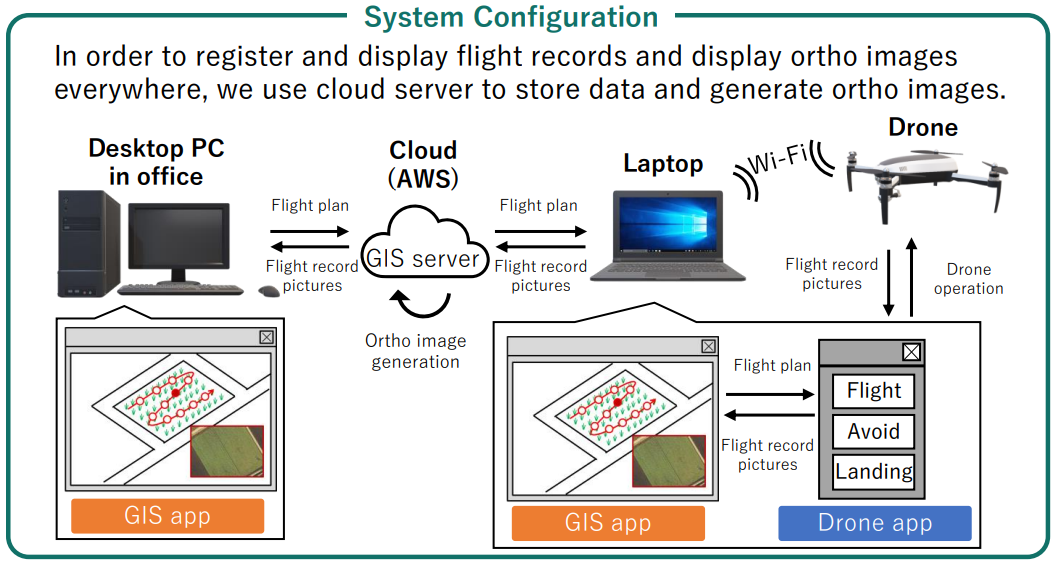

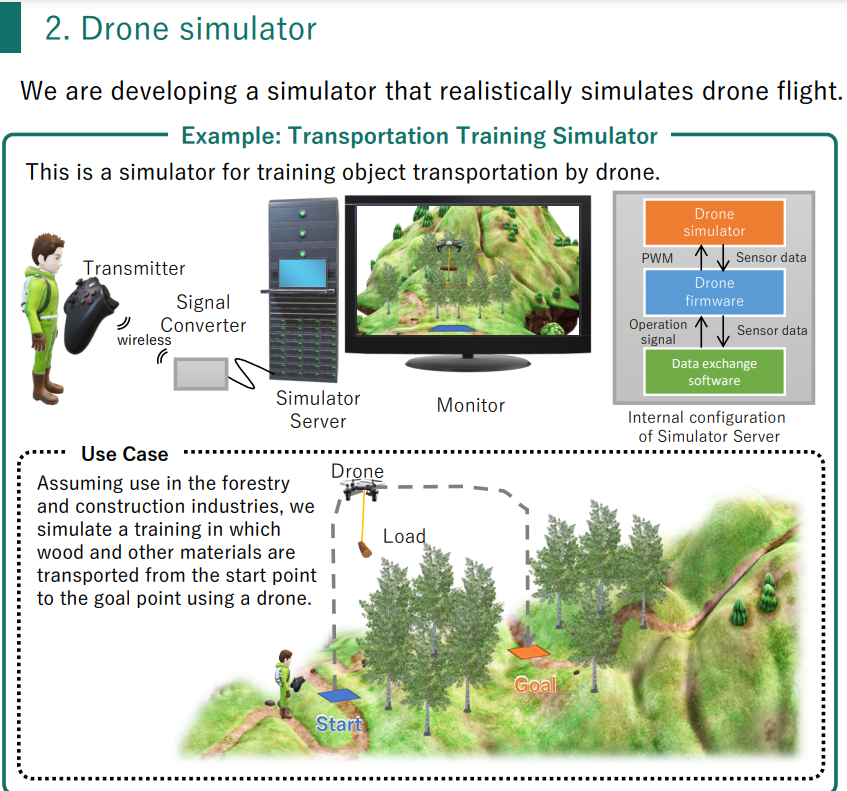
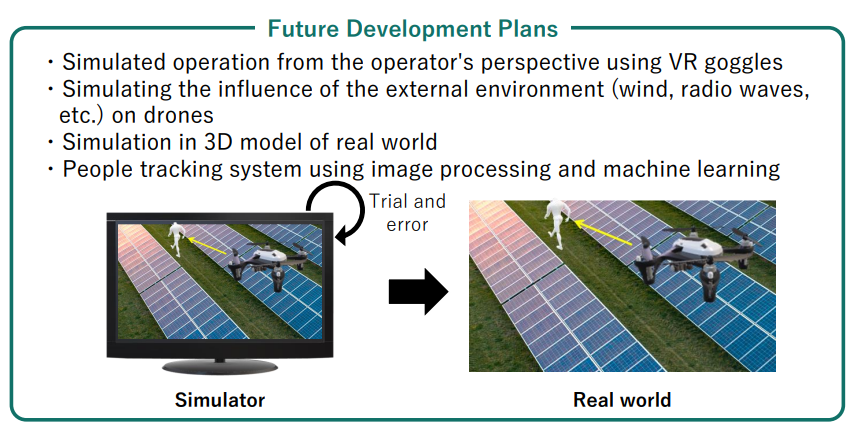
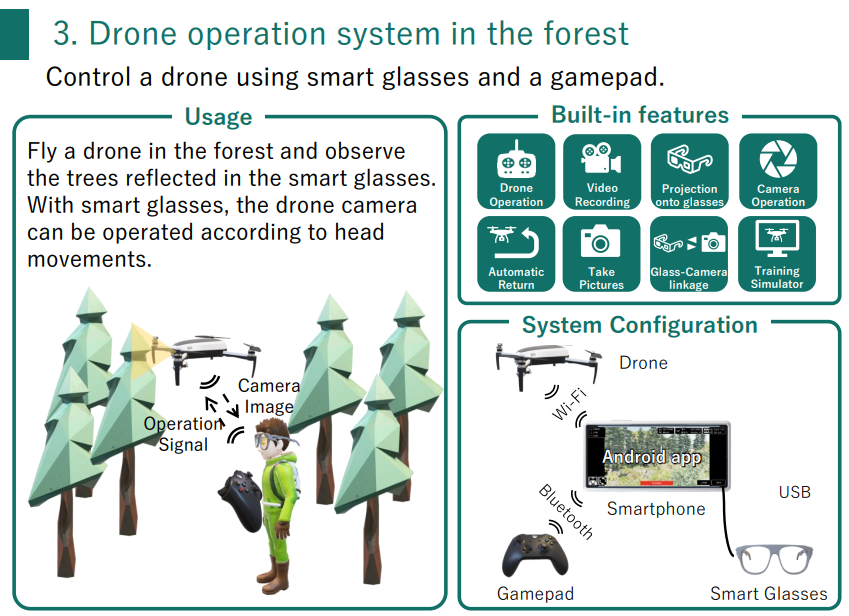
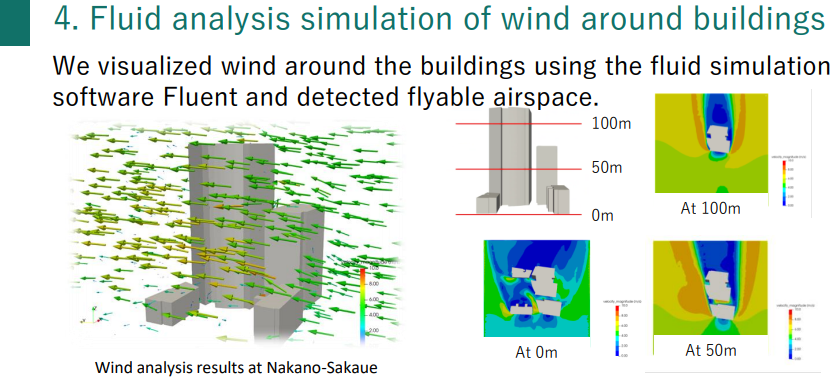
In addition to aforementioned examples, NDD can propose a system using drones to meet your needs. Click here to contact NDD Corporation.
To reach the Global Drone News editorial team on your feedback, story ideas and pitches, contact us here.

